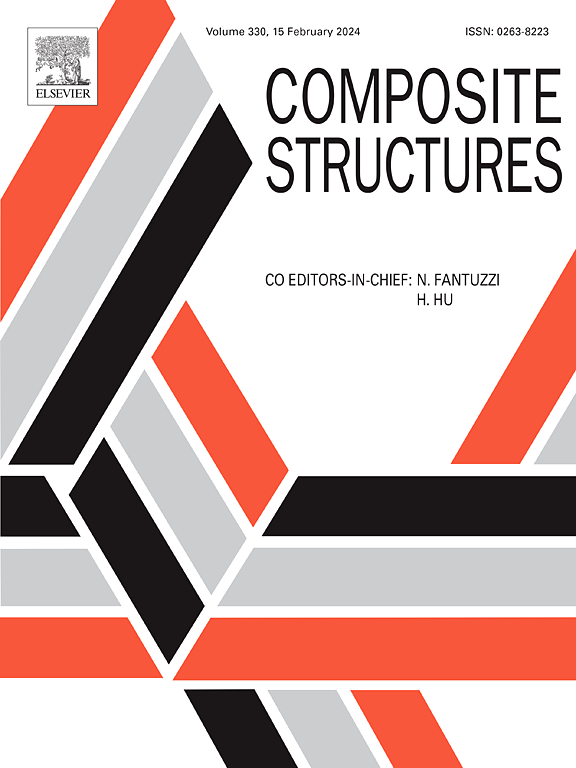加压吸塑试验中应用时间对粘结金属/复合材料层破坏压力的影响
IF 6.3
2区 材料科学
Q1 MATERIALS SCIENCE, COMPOSITES
引用次数: 0
摘要
修复管道穿壁腐蚀缺陷的另一种方法是在受损区域上使用复合套管。在金属表面和复合表面之间,通常涂一层粘合底漆。粘合剂是树脂(在复合材料中使用的树脂可能不同)和固化剂的混合物。将树脂与硬化剂混合后,胶粘剂与胶粘剂连接所需的时间会显著影响粘接效率。本研究探讨了加入特定类别的复合材料和金属附着物的时间间隔(称为初始应用时间ti)对水静力水泡试验中获得的破坏压力的影响。进行了泡罩试验,验证了考虑不同时间间隔ti的失效压力。观察到,在给定的时间间隔后,破坏压力可能显著增加。提出了一种预测失效压力随ti变化的解析模型。最后,提出了如何利用线弹性断裂力学的概念,将这些实验结果应用于实际腐蚀管道修复的测试和设计。本文章由计算机程序翻译,如有差异,请以英文原文为准。
Influence of the application time on the failure pressure of bonded metal/composite layers in presurized blister tests
An alternative method to repair through-wall corrosion defects in pipelines is to use a composite sleeve over the damaged region. Between the metallic surface and the composite surface, it is usually applied an adhesive primer layer. The adhesive is a mixture of a resin (which may not be the same used in the composite) and a curing agent. The bonding efficiency can be significantly impacted by the time it takes to join the adherends with the adhesive after mixing the resin with the hardener. This study investigates the influence of this time interval to join a particular class of composite and metal adherends (which will be called the Initial Time for Application ti) on the failure pressures obtained in hydrostatic blister tests. Blister tests were carried out to verify the failure pressure considering different time intervals ti. It is observed that the failure pressure may increase significantly after a given time interval. An analytical model is proposed to predict the failure pressure as a function of ti. Finally, it is suggested how to adapt these experimental observations to the testing and design of real corroded pipeline repairs with composites using concepts from Linear Elastic Fracture Mechanics.
求助全文
通过发布文献求助,成功后即可免费获取论文全文。
去求助
来源期刊

Composite Structures
工程技术-材料科学:复合
CiteScore
12.00
自引率
12.70%
发文量
1246
审稿时长
78 days
期刊介绍:
The past few decades have seen outstanding advances in the use of composite materials in structural applications. There can be little doubt that, within engineering circles, composites have revolutionised traditional design concepts and made possible an unparalleled range of new and exciting possibilities as viable materials for construction. Composite Structures, an International Journal, disseminates knowledge between users, manufacturers, designers and researchers involved in structures or structural components manufactured using composite materials.
The journal publishes papers which contribute to knowledge in the use of composite materials in engineering structures. Papers deal with design, research and development studies, experimental investigations, theoretical analysis and fabrication techniques relevant to the application of composites in load-bearing components for assemblies, ranging from individual components such as plates and shells to complete composite structures.
 求助内容:
求助内容: 应助结果提醒方式:
应助结果提醒方式:


